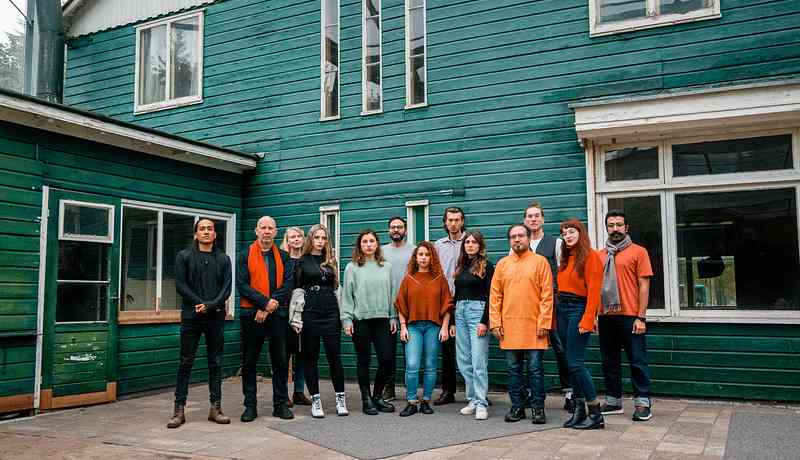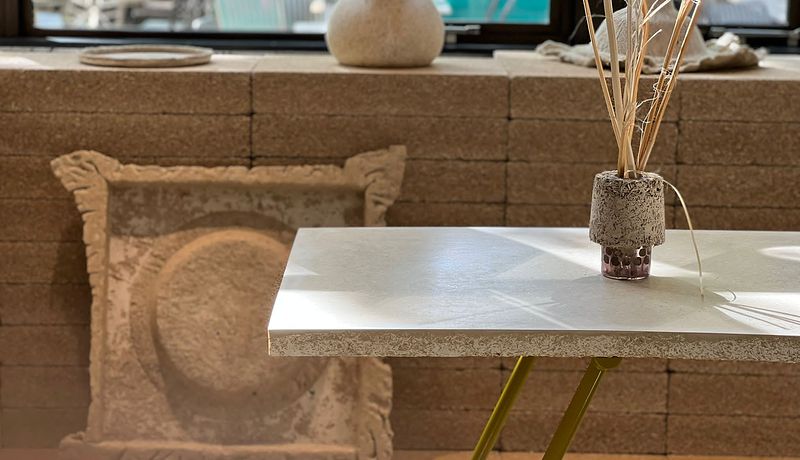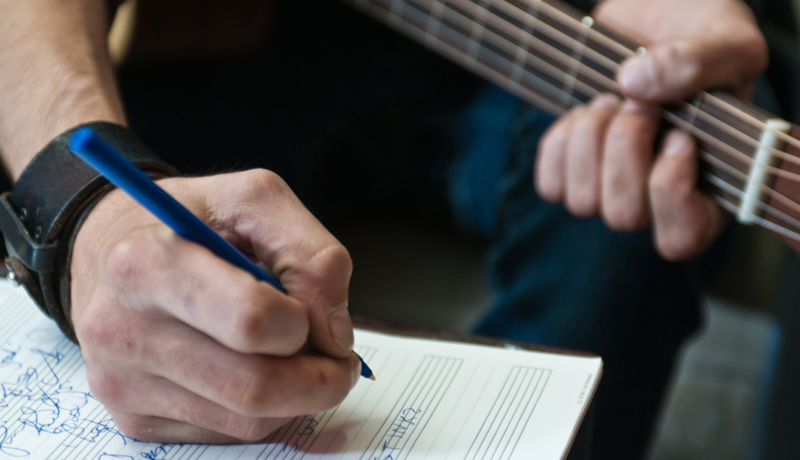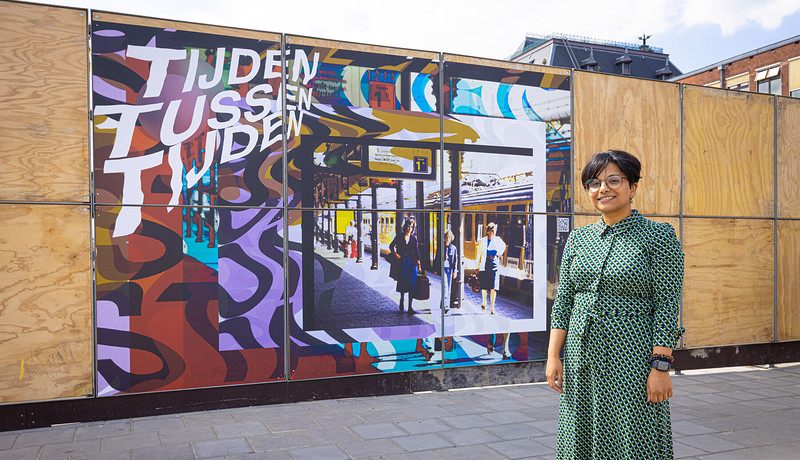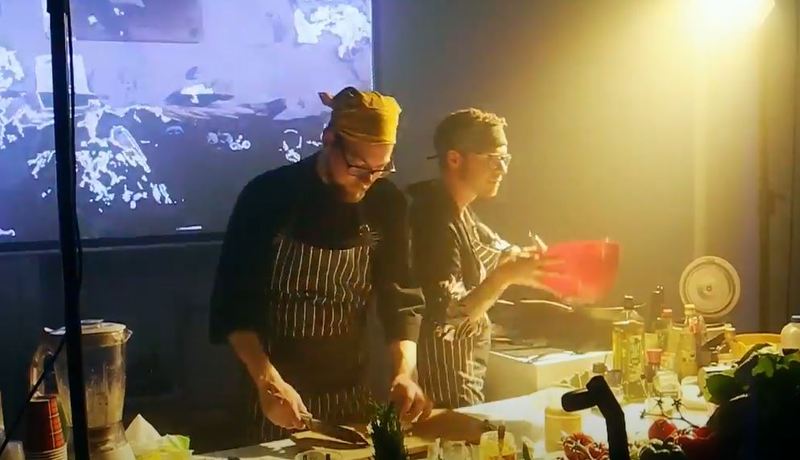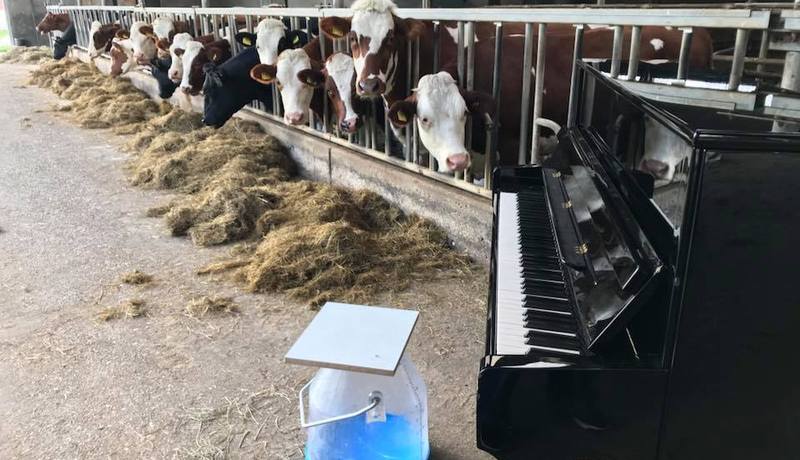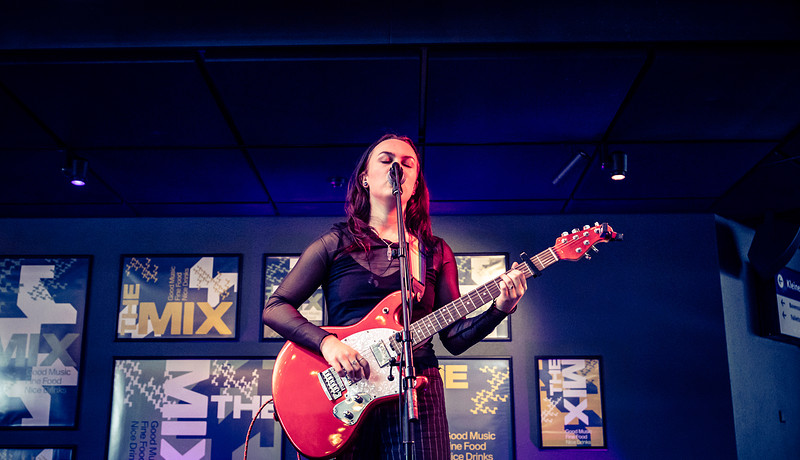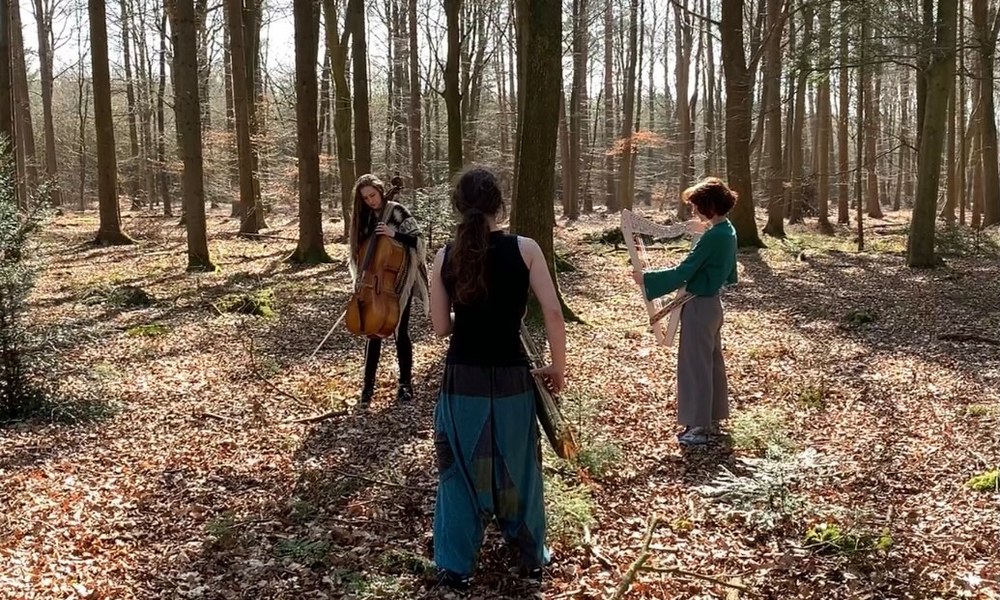
Unexpectedly inspiring, three students from the Prince Claus Conservatoire experienced their visits to the Hillig Meer nature cemetery in Eext. As part of their master's degree, they made improvisations. The result can be heard during an audio tour through the cemetery.
Patricia Swart (Netherlands), Aurélie (Lily) Journot (Switzerland) and Galya Samborsky (Lithuania) didn't really know what they were getting into when they said 'yes' to a school assignment. From their master's degree at the Prince Claus Conservatoire they were allowed to go to Hillig Meer a few times to compose music on location.

Patricia Swart, Aurélie (Lily) Journot and Galya Samborsky
Lily: ,,I thought: nice, a field trip! Due to the corona measures, you don't get to so many places other than the conservatoire. But then we got there and I thought, okay… there are people buried here!" Galya was also unfamiliar with the phenomenon of 'natural cemetery'. It felt a little weird when she first got there, "but not as uncomfortable as a traditional cemetery."
The assignment was initially somewhat outside the comfort zone of the conservatoire students. Basically it came down to: roam the cemetery and the estate, be alone with nature, be inspired and let the music flow. In other words, improvise.
Letting go
Patricia, who plays the saxophone: ,,That work process was new to us. I normally work in a very structured way. It was inspiring to let that go and just go through it all." Cellist Galya also always thought that you need ideas and motivation to make music. But at Hillig Meer, inspiration soon flooded. “The lack of structure gave me freedom. In one day I made both the music and the lyrics. It sounds a bit strange, but it felt like I was the interpreter of the environment."
Tricky key
Walking around quietly, sitting here and there and opening all senses – that turned out to be the trick. Lily: ,,I heard birds and I imitated that sound with my harp. During another visit I realized: many people come here with their emotional lugage. And I also came with mine. It inspired me that every visitor has their own story." At some point Galya got the impression to play a certain key. "A tricky one", she says. "Normally I really try to avoid that key. But now I could use it well. There is a piano in the building on Hillig Meer. With this piano, cello and my voice I made the composition."
Audio Walk
Their music leads to intriguing listening experiences. They are free, often serene experimental pieces. It is special to hear how the students thought Hillig Meer 'sounds'. The three musicians themselves are especially surprised by the coherent result. Lily: "We all wrote different things in largely different places, but somehow the inspirations seemed to fit together." The three musicians have left their work behind in an audio walk can be downloaded at the Hillig Meer website using the Izi.travel app. The route is a nice end to an experience that the girls will not soon forget. Galya: ,,I'm not someone who likes to think about death. But I've talked to people who work at Hillig Meer about what their experiences are like. For them it is the circle of life. I thought that was a peaceful idea." Lily wouldn't have wanted to miss it either. "I definitely want to go back to Hillig Meer."
This article has been published in Dutch on www.mensenlinq.nl, text Martine van der Linden.
Feedback component
How satisfied are you with the information on this page?
